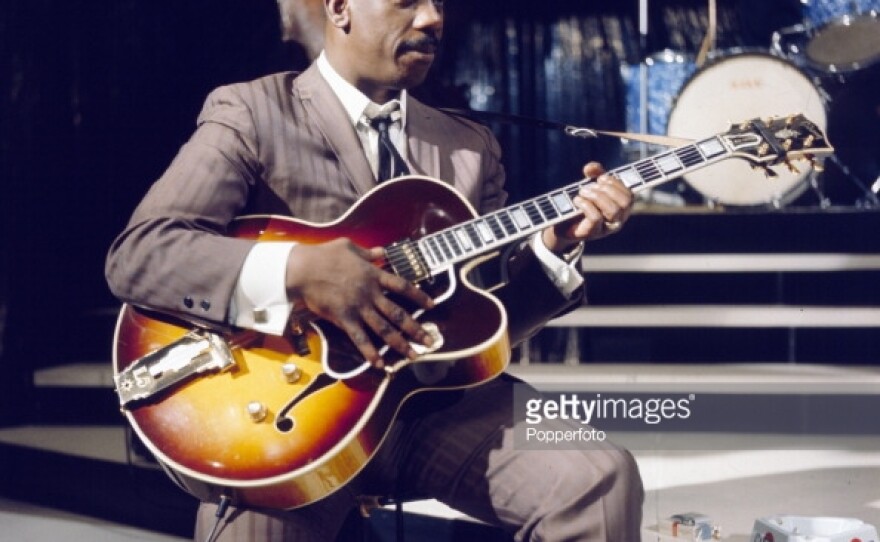John Leslie “Wes” Montgomery was first signed to Riverside records in 1959, and by 1968 he was dead. After less than ten years of recording and performing, Montgomery became one of the most innovative, admired, emulated guitarist in the history of the instrument.
Montgomery changed the language of the guitar. His compelling harmonic approach and remarkably fluid single note facility, along with his trademark octaves and use of sophisticated melodies, influenced generations of players who followed him. Becoming known as the heir to guitarist Charlie Christians throne, Montgomery won a Grammy for Best Instrumental Jazz Performance in 1967 for “Goin Outa My Head.”
Montgomery picked up the guitar at the late age of 19 and began to teach himself by playing along with records. He genuinely played “for the love of it,” never to be intimidated by technical shortcomings or other guitarists. He began playing locally in his hometown of Indianapolis, Indiana with his brothers Monk Montgomery on bass and Buddy on Piano.
Starting in 1948, Wes Montgomery toured for two years with Lionel Hampton, but he had to return home to work a grueling factory job by day to support his wife and seven children. He continued to play in local clubs and made a few recordings with another upcoming local trumpeter, Freddie Hubbard, in 1957. But it wasn’t until September of 1959 that Cannonball Adderley caught Montgomery performing at The Missell room in Indianapolis and sent him to Orrin Keepnews of Riverside Records. Montgomery recorded over a dozen albums as a leader for Riverside between 1959 and 1963.
Montgomery had a double jointed thumb that enabled him to play up and down strokes effortlessly. He chose not to use a plastic pick to get in the way. A beautifully natural improviser, his octave playing was more like the sound of the jazz frontline saxophone and trumpet sound. Montgomery was an energetic player who also knew just when not to play, building momentum and creating almost singable phrases to his solos. The velocity that Montgomery could generate is still astonishing (note his solo on John Coltrane’s Impressions). There is never a moment where you think he could do better with a pick.
John Coltrane pleaded with Montgomery to join his ensemble after hearing him in a jam session, but Montgomery turned him down, preferring to front his own band.
Most of Montgomery’s riverside recordings feature him in a trio or small group setting. But in 1964, he moved to Verve records where he was featured with bigger orchestration. There, he recorded with organist Jimmy Smith and was featured in arrangements by Oliver Nelson.
Longtime jazz producer Creed Taylor recorded three A&M albums featuring Montgomery with the likes of pianist Herbie Hancock, Ron Carter, Grady Tate, Hubert Laws and lush orchestra and string arrangements (which were recorded separately) by Don Sebesky. The albums became the most successful recordings of his short recording career.
Musical archeologists have discovered and recently released a series of early Montgomery recordings made between 1948 and 1959. The recordings were made at various time of his formative years by armature recorders. They reveal an evolution of genius and a technical mastery of guitar playing from a natural musician. In his own words, Montgomery said:
“I don’t practice. Every now and then I open the guitar case and throw a piece of raw meat in…”
“If I know it then I don’t need to practice it. If I don’t know it then I ain’t risking it”
Montgomery also never cared too much about gear (what equipment he used). “I got a standard box. I don’t never want nothing special. Then if I drop it I can always borrow someone else’s”
Montgomery had just returned home from a world tour when he complained of feeling ill to his wife. He then died of a heart attack on June 15, 1968, at age 43.
Wes Montgomery’s music has defied categorization and lives forever as inspiration in the lives of guitarists from Jimi Hendrix to George Benson, and other instrumentalist as well.








